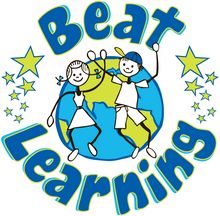Welcome to Beat Learning!
February 2011
Thank you for visiting my website. Before you peruse the content, I would like to clarify a few things.
First of all, I am an insurance broker, not an educator, scientist, nor do I have any experience in the education field. I am simply a problem solver! The genesis of the idea of Beat Learning is further explained in the Concept section of this website.
My invention is very simple. In fact, my attorney was concerned because in his own words, “the patent art is so elegant and simple, anyone could write letters on a pillow and have their kids stand and punch the letters and there is nothing to sell”.
The above statement brings up two very important facets of the Beat Learning game invention:
-
A few people have asked if using a punching bag in a class room causes violent behavior. Beat Learning has been used in Kindergarten and First Grade class rooms for 2 years and there has not been one incident of violent behavior related to Beat Learning. In fact, children with learning differences are typically more active than normal learners and the game is a healthy outlet for their natural energy. It helps them “break the code” to which they gain confidence. Normal learners, who use the game, think of it as a fun activity and it enhances and accelerates their learning experience. The enthusiasm amongst the kids is incredible. The eventual device will not be a punching bag and the word punch will not be used in the curriculum protocols. We are in the beginning stage and a punching bag is the perfect design for an analog version.
One could argue that illiteracy is actually a common denominator to violent behavior. From the playground, city parks, and prisons, the frustrations and pain experienced by those who are illiterate tend to demonstrate the unwanted behavior. The downward cycle likely begins at an early age with negative attention at school, later to self medication with drug and alcohol abuse, and ultimately turning to illegal activities to make ends meet because they feel like they don’t have any other option.
With nearly $80 billion being spent on our current education system and approximately 26% of 12th graders lacking basic skill in reading, problem solving and math, it’s no wonder 75% of our prison population is illiterate. Illiteracy is an epidemic and is one of the root causes of violent behavior, not to mention a real societal financial burden. My game can make a difference!
-
By creating the Beat Learning Game as a programmable device, the functionality and marketability would be inherently scalable and the possibilities could be far reaching on a global level. It could be programmed to recognize areas of weakness and automatically teach accordingly. There could be various levels of commercial use for those students with more challenging needs. The game could be used for people with memory loss, possibly from head injuries, using picture recognition techniques. Whether learning the alphabet, whole words, entire sentences, math in so many capacities, different languages, etc., the programmable device has enormous potential.
Why has the Beat Learning game been so successful in our case studies for the last 2 years?
- It is an educational game that incorporates all three learning modalities simultaneously - Auditory, Visual and Kinesthetic - thus it helps all types of learners.
- The children have fun while learning and a “myelination” occurrence may be taking place. Myelination is a process identified and discussed about in the book The Talent Code.
- Six minutes a day, 3 days a week for one month, Beat Learning helped 3 first grade students learn to read.
What now?
The way I see it, in order to get my invention to the next level, one of two things must happen:
- Either an existing company purchases a licensing agreement and takes the reigns in developing the final product(s) or...
- venture capitalists / investors help me put a team together and get this learning game to market.
Simply put, utilizing my invention in its current unsophisticated form, I’ve been fortunate enough to have helped children break the code and learn to read where other methods have failed. It’s fun, simple and highly effective.
Implementing my idea into a more durable, sustainable, and programmable device, the Beat Learning game could be incorporated successfully in every Kindergarten, First Grade and Second Grade class, thereby reducing illiteracy considerably…right where much of it begins.
